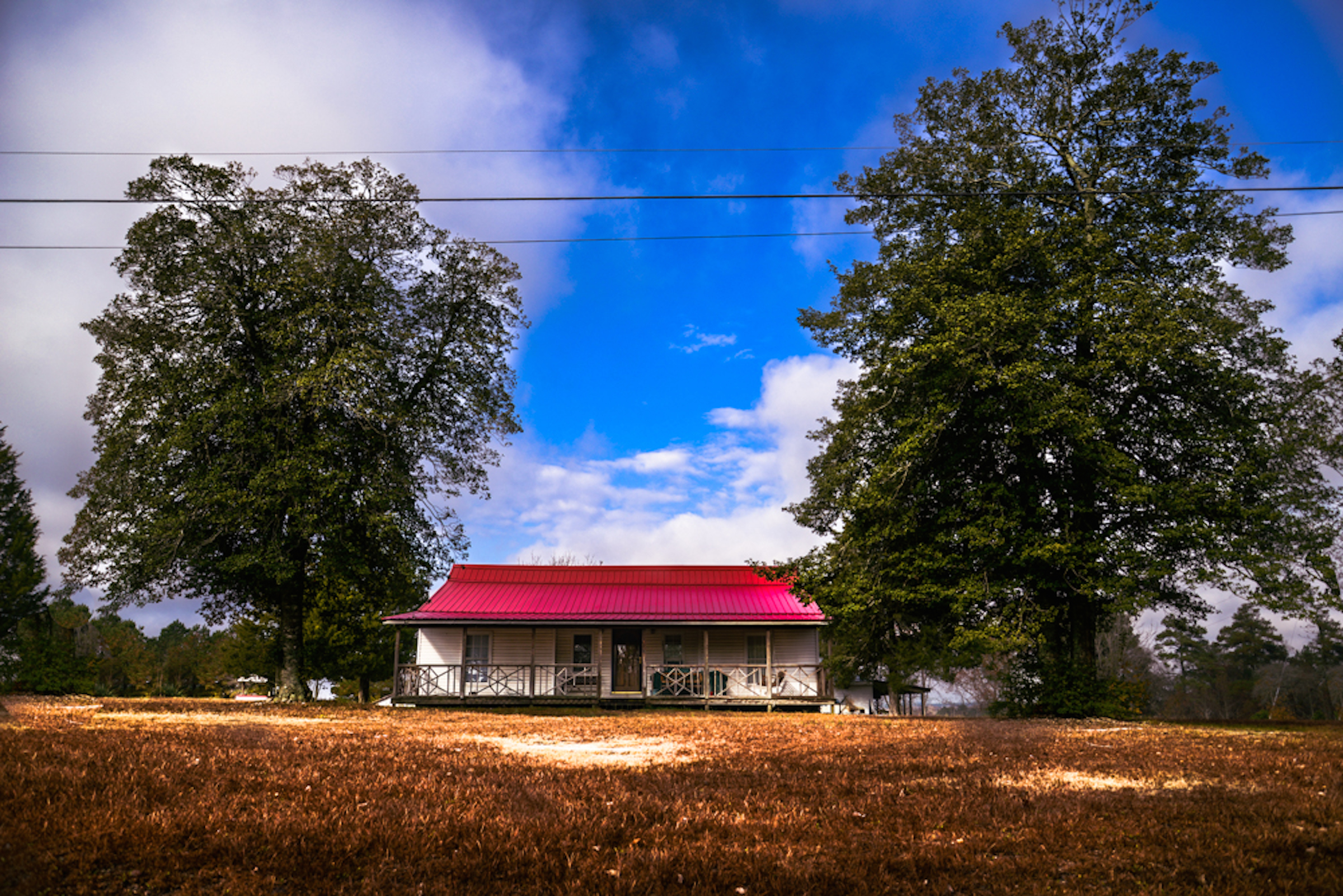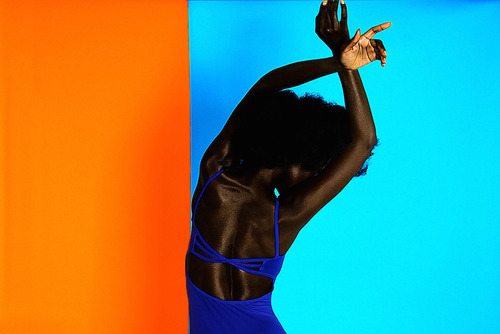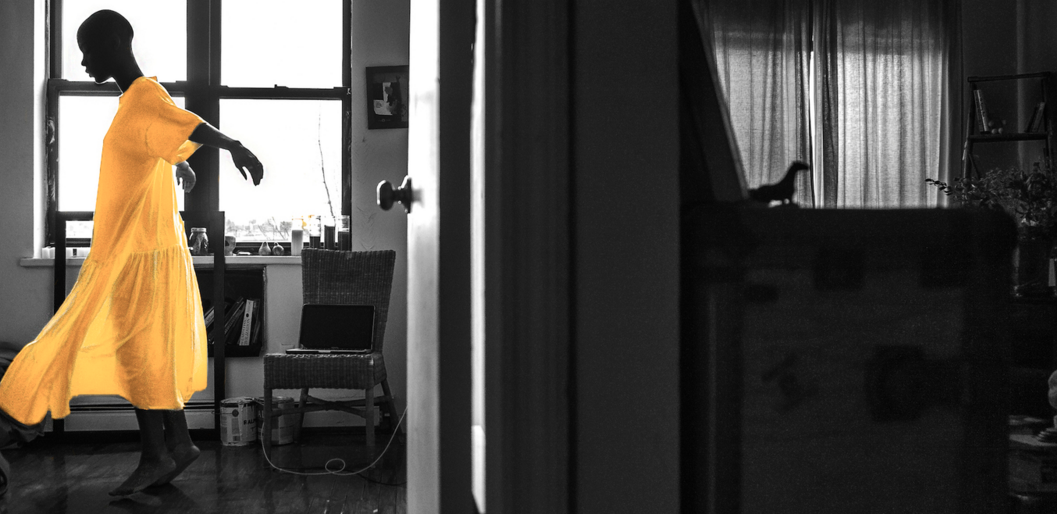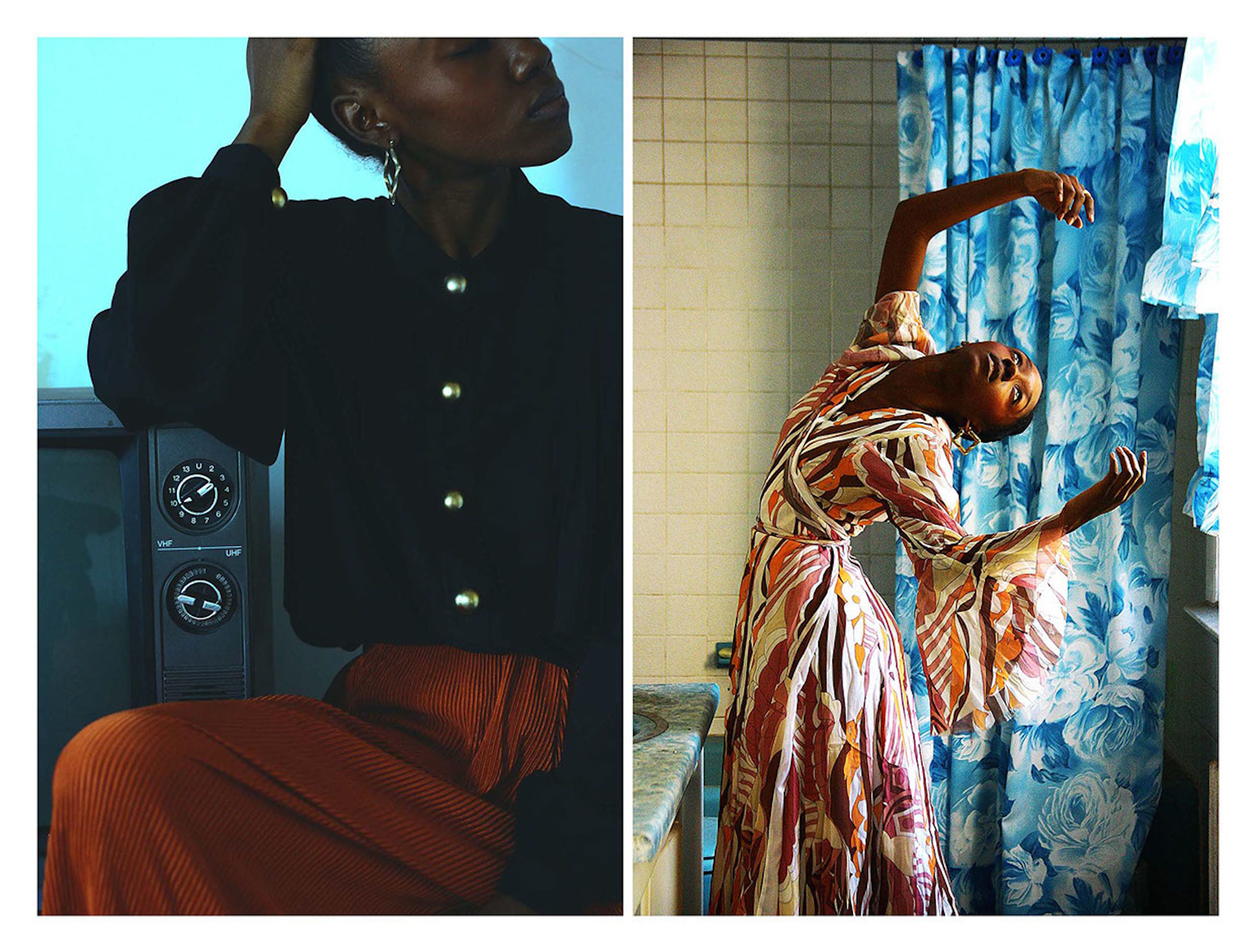by AGT EDITORS
June 6, 2017

The inaugural issue of A Gathering Together features the dynamic work of the artist collective, TunnelVision Artists Agency (TVA). Based in East New York, this group of photographers, digital artists, fashion designers, painters, and musicians extends a legacy of artmaking and culturekeeping that is reminiscent of collectives like the Organization of Black American Culture and the Black Rock Coalition, yet attuned to the complicated cultural times we occupy. In an era where representation purports to emanate from the cultural mainstream, the dynamic visages of Blackness and reality that emanate from the lens of the TVA challenge what those streams project as the ultimate reality. Further, TVA renames its stream as the main—and perhaps the only way possible to represent reality—rather than seeking other people’s center in order to articulate its message. Recognizing no boundaries between the visual and the aural, this collective works to extend a vision of Black humanity that both represents and transcends the time and space we occupy. The work of this collective is marked by a strong sense of coloration and a keen eye toward the beauty of the figure—particularly, the Black figure. TVA was founded in 2013 and has grown precipitously, while remaining grounded by community and family. The collective has exhibited at [re]New Lots, Okay Space, and SXSW 2017. The artists’ philosophy is in part guided by the desire to remain focused on the particular, in order to more effectively realize the larger world—hence, the idea of TunnelVision. The collective includes founders James “JD” Malone, Stephen Small-Warner, and Dexter Jones. It has expanded to include the painter Sophia Dawson, the fashion designer Berchelle Egerton, the singer-songwriter Geminelle, and the DJ Austin Trapp. We sat down with Malone, Small-Warner, and Jones to discuss their vision and their take on the role of art in freedom.
(This conversation has been edited and condensed for clarity).
AGT: For each of you, we would like to get a sense of what led you to make art your life’s work so far. What was the major influence in your life that inspired the moment of “this is going to be how I articulate what I have to say to the world.” How did that moment happen for you?
JD: I would say that it’s actually kinda funny that we’re together, I didn’t realize the power of that until I caught that question. I think Stephen and Dexter both have inspired me to be an artist. I would say first Stephen, when I first picked up a camera, I think it was the first time Stephen picked up videography and photography as well. Seeing the ability—I say this now with clarity, I didn’t have clarity of thought then—seeing the power in being able to dictate what somebody saw, then kinda dictate, or allow them to step into your mind and thinking too. I saw the power in that and I thought it was really cool. One thing that really inspired me was that feeling of being present. When you create art, at least for myself, as a photographer, when you create your art and when you’re present there’s a certain high that comes with that presence. It just feels good to be in the moment. Particularly, in photography, there’s a power that you feel from capturing life.
Every medium has its own power. With painting you’re creating painted [images], music you’re creating vibration. But with photography, you’re literally capturing life, you’re literally capturing time and space and color, with a little instrument in your hand. And that just feels powerful. When I think about when I really fell in love with photography and art and creating is when I realized you could tell your own story, or you could tell someone else’s story from your own lens. I think in the knowledge that I have now—I keep saying now because this is a different clarity than I had when I first started—but the knowledge that I have now, that power to influence production, and kinda put a mind in a space, where you’re like, “Here’s what I feel is important. Process this.”
Then there’s the importance of just digging into yourself. That level of meditation—I’m a heavy meditator. I feel like meditation and art creation have the same effect on a person. It makes you dig and find solace in yourself. I fell in love with myself through art. I think that’s how I fell in love with art, [it was] when I fell in love with myself.

Stephen: It’s a hard question, to be honest. I always thought about being able to communicate something important. Like you feel these things around you, you’re affected by these things, especially as Black males. I really wanted a way to communicate and couldn’t really find a way. I don’t know if I was trying to be an artist or if I was trying to deliberately communicate something that I couldn’t necessarily just do through writing, which early on, I didn’t want to write everything.
I was a business management major and I randomly picked up a camera because our mutual roommate was a filmmaker. He would ask if I could help him. And I was like, yeah. I was always into technology, and ever since then, my curiosity made me an artist. My curiosity has taken me down into this world. I mean, this is ten years later, I’m still very curious about the technical craft of photography and film, just being able to capture images. But I think there’s a potency to it when you’re capturing your people. Especially, in the sense that people haven’t seen that. They’ve erased a lot of what we would have been able to see as visual statues of who we were and who we are. So I think that it adds a potency to it, to my curiosity, to capture people of color, to capture perspectives of colors, to capture relationships between people that we don’t see. I think that whatever people’s definition of an artist, I think my curiosity will always be [mine]. That’s what made me an artist.
Dexter: For me being an artist, I kinda made this self-discovery recently. I feel like ever since I was a little kid, my sole interest was in anything related to the arts. And anything else I really didn’t have much care or interest for. I was talking to my friend the other day, and I was telling her, that to this day, I would have a hard time telling anyone what my mother’s job was. All I knew was that my mom worked in an office, in a cubicle. And I had very little interest in that. I didn’t care about it. And this is like me as a little kid. I just wanted to do something different. I’ve always been fascinated by anything artists did, whether that be playing an instrument or drawing images.
It wasn’t until high school [that] I started doing spoken word and I started performing on stage. The very act of being on stage in front of people does something to you. As an artist, when you start to transition from doing things just because you like it from creating to share it with the world, it made me start to question myself as an artist in terms of the message that I’m going to convey to people, what am I going to say. What are they gonna leave with? That’s when I really start[ed] falling in love with telling stories. That’s when I really started paying attention to curating a message that really catered to the Black experience, to help others and ourselves better understand our experiences. Shortly after that, I transitioned from spoken word to photography. For me that was kinda like a way to—rather than always preach to people—tell people what’s going on, it was more of an opportunity for me to observe, take in what I see, and just show people what I see. For me, that’s one of the joys and pleasures that I get out of what I’m doing now, to really just sit down and take images and take stories and retell those stories.
I feel like meditation and art creation have the same effect on a person. It makes you dig and find solace in yourself. I fell in love with myself through art. I think that’s how I fell in love with art, [it was] when I fell in love with myself.
AGT: One of the striking things about TunnelVision is that it seems to be continuing the legacy of the artist collective that goes back at least for us, eighty years, with collectives like the 306 Group (Jacob Lawrence) and Spiral—which included people like Romare Bearden and then perhaps the most critical of them, AFRICOBRA, which was founded in Chicago in the late 1960s. AFRICOBRA artists talked about building a space where not only did artists not feel alienated or isolated, but also spaces where they had their own individual identities that were fortified by being in community with other artists. That produced the beauty of this “aesthetic” tradition, which is demonstrably unique—with artists like Jeff Donaldson, Barbara Jones, Wadsworth Jarell, Jae Jarell, Nelson Stevens, James Phillips, and others. They are individuals but they also have a common aesthetic posture. With TunnelVision, there is some unity at the same time that there’s individual identity—the usage of color and stillness stand out uniquely and as a collective aesthetic. Do you all see yourselves as having a combined aesthetic? When you created the collective did you see yourselves as producing these common qualities? Or did the collective stem from a friendship? Or both?
Stephen: To be truthful, Dex and James, I respect these brothers. They my brothers. We started off as just friends. I think I knew Dex through Sasha Jackson, an amazing actress, and me and James both know Sasha. Dex was already doing his thing. Me and James were working together. I’ll say this, before artistry becomes [a] commodity— before anything that we shoot, anything that we’re doing or anything that we can say about the Black experience—[there] is the community itself. I think that we came together as brothers in communion, for something that we didn’t know what it was per se, but we knew that we respected each other. There’s family first. Because there’s family, because we have that energy, we attracted audiences in that way. I don’t think we attract audiences first from our work, we attract them with this family vibe.
The work in color that you’re talking about, it takes a group of artists, especially Black artists to start pushing a standard about how we capture ourselves. I think the aesthetic [that] you’re talking about, it’s not necessarily unique to us. Any artist that’s approaching or trying to capture colored skin of any kind, artistically, they’re going to pushing a standard that we have not seen before—or in a long time. You’re going to see a different use of color, of richness, of soulfulness, in the work. That’s who we are.
AGT: It reminds one of what Haile Gerima, the filmmaker, said about having to shoot Blackness differently than the Hollywood convention, in the film, Sankofa. It had to be shot in different ways, in ways that film school had not prepared filmmakers to do.
Dexter: I think that there’s also something to be said about us as a collective and also as individuals, not being afraid to push that, to recognize that and still move forward and still try do it in an innovative way, and to try to make sure that we get captured properly, the way that we’re supposed to be captured. There’s artists—and then there’s artists with a very particular mindset, where it’s like you either succumb to the standard or you try to push past it and break it. We have a desire to create something new. I don’t mean that in the sense that we’re trying to do things that nobody has ever done before, per se. But even in terms of what we see around us, in our immediate peripheral. We are motivated to do something that’s gonna challenge or push that standard forward. I don’t know that any one of us knows for certain that we all have a common thread in terms of color aesthetics. But I do feel like we all can feel that. Just us feeling that goes a long way.
I think that it’s imperative too, when you feel something, to pay attention to it. To go with it. I’ve known James three years. Before I joined TunnelVision, I didn’t know very much about James. I knew Steve, a little bit. I knew Steve as an artist. We were artistic friends. The level of knowledge that we had of each other was very limited. Steve and James go back to Howard, and their friendship is like ten years strong. I still felt like it was a connection that made sense to be a part of. In terms of the aesthetics of the work, the mindset of the artists, I thought we were all on the same page in that respect.

JD: I hella agree with the point that it was a friendship and a common vibration that unified us. I saw Dex’s work years ago, but when I met Dex, I was like, “Oh this brother’s cool. This is a cool cat.” And then when I invited Dex out to work to feel his vibe, and the energy was right. At a certain point, you know, it feels right. It’s like, “Okay, you know what?” There’s something about the way this brother moves is reflective of the way I like to keep people around me. And then it’s interesting to me, we’ve done like three official group shows. So even when you put our art in the same space, you can literally feel the space radiating with a unifying frequency. I’ve seen this in people.
Recently, we went down to SXSW, and we went down with some newer, younger members of TunnelVision. We rented a house out, we had everyone over chillin’ with us. We had the young members of the crew, they invited their homies out. The energy was slightly unbalanced, slightly sporadic. I was cool with it, we at SXSW, the vibe is like everybody got people they trying to check out. But the first night, the art wasn’t up. There was probably like forty people at the house, chillin’. The next day, I was like, “Yo, we need to put the art up in the house.” We put the art up in the house, and that night, another thirty, forty people came to the house just to kick it. When I tell you the energy…it seemed like the art had set a vibration, that when people walked into they almost became more elevated, and more chill themselves. And it was a very clear distinction from the night before and the night when the art was collectively up in the same space.
Things are spiritual and scientific. Everything we see, even if it’s at a distance, it still has a physical interaction with our body. I truly believe that, speaking physically, when a person walks into a collection of what is our art, I find it tunes their spirit up to a higher vibration. One thing that I can say about us, as I sit back and I think about us, we really do push others to grow as men, to grow as people, to grow as spirits. We were down in DC recently, almost the entire weekend was wrapped in this like spiritual form of evaluation. Everybody talking about where they are spiritually. Me and Dex always have this conversation. We have recordings of us talking when we first became united under TunnelVision. These conversations, they’re real progressive. I’m gon’ check where you are, at your mindset, and you can see where I am at mine, and we can come together, elevate each other. It’s definitely a unifying motion. It’s like a rhythm. It’s like a good 4×4 on a track team, the best teams are not the fastest runners, but the people that are most in tune with each other. It’s a friendship thing first, a friendship and a love for our people first.

AGT: We chose “The Yellow Dress” as our cover image unanimously when it was suggested by one of the editors. What was your thinking behind the image?
Stephen: I have a mother and a sister. Like I said, family is very important to me. It’s all in my work. Even to the point to where I’ve shot James and Dex. There was a value to sitting down and watching [my mother and sister] and helping them [pick out clothes while they are] getting dressed. That’s my fascination with dresses. I’ve done multiple [shots like this], and I’ve been attracted to fashion. But sitting down and helping pick out and curate what they would look like. There’s these small moments in between—where especially women—where they are unsure, “Is it too long?” or “Is it too short?” and “I’m too this…” or “I’m too that…” there’s this spiritual moment right in the middle— there’s just a lot of joy in that moment. There’s a freedom that I would say [resonates]…it sounds weird, but [while] watching my mother get dressed for church Sunday mornings, or my sister, even my father, there’s something about the pristine beauty of people showing their best. I think that when I was doing that shoot, there were moments where I was trying to capture, they weren’t planned, but they had this feeling to it. Even in “The Yellow Dress” it’s a very still image, but there’s a lot of motion, there’s a lot of contrast, it’s a blissful moment within the darkness. I think that’s where it stems from, that’s where the “Yellowdress,” and the approach to shooting, these different color blocs, these palettes come from. Those moments watching my parents dress.
JD: I’ve never heard you explain that image like that before. When you said it though, my mom used to come into my room and be like, “What heels look good with this? Does this look good with this dress?” You’re right, there’s a moment where you’re looking at your superiors, your mothers, your makers. This kinda self-doubt. And it’s like, “No, I don’t want you to feel this way. I want you to feel beautiful.” When you give your honest opinion, there’s a moment where they feel joy and in unison with their best self. And it does feel really good, to be the voice that got them [there]. It’s like, “Yeah, I helped my mom feel good today.”
Dexter: Any time my mom was planning an outfit, she’d have to come into my room. She had to because my room had the only full-length mirror. She had to look at herself in the mirror, and if I was there, she’d ask me questions about how she would look what she should wear. It’s interesting that we all have similar experiences like that.
If this could be the moment that our image could be ubiquitous, in 150 years, if our image is ubiquitous, I think we would have done something important. I think the creators of the past have done that and have influenced us. So all we can hope is that we are the shoulders that the future giants stand on.
AGT: One hundred and fifty years from now, what do you want people to say about your art?
JD: I consider my life to be all artistic expression. But when I think about what I’d like people to remember about my artistry, I really want them to see it as one of the pillars [and] unifying forces that connected the diaspora. I feel our people very deeply, almost like I’m hugging an embodiment of our people’s collective consciousness, our collective motion, all the time. I can feel them very deeply. I think at this point in my life, in the future, I want to see the Black world, the African world, reclaim its independence, its freedom, as spiritual people. I think one of the first things that needs to happen for us [is] to identify with all the sides of ourselves first. I think art is a true form of allowing us to identify with all the new sides of ourselves plus the old sides of ourselves, and see each other as the same force. I’d love for my art to [have people say], “You know what? James Malone’s art and his life as art, allowed for Black folks all over the world to almost fall back into themselves, re-whole each other.” [In], 150 years from now, I hope that we’d be on top of everything again.
Dexter: I feel like 150 years from now is a long ass time. I could only hope and pray and will that our people will be free by then. And that all people will be free, really. Freedom is a universal thing that we all need to obtain. It’s hard to guess or gauge what a free people will be looking at our work as. But I would hope that our work and the work that we’re doing is just one of the many critical components that [was] in the flow to bringing us toward freedom. I’m hoping that it contributes to it, and a free people 150 years from now, look at it and recognize it as that. So people of color, I hope that they look at it, and say that is who we are, and it’s beautiful. For non-people of color, I hope they look at it and say that is who they are, and it’s beautiful. I don’t know if I could really hope for anything more than that.

Stephen: I study the masters of the craft a lot. Just because to have any kind of influence on people, hundreds of years later is powerful. I don’t think that I think too much about the bigger scope of it, that’s who I am: Small-Warner, in my work, and in my craft. I feel like that is what grounds me. I would hope that [my] family name is in the succession of [contributions that people have made like those] that are still influencing people today. The Teslas and the Einsteins, all of these people who have contributed to human society in a potent way. Still, to this day, their fundamentals are being used to progress the society. So, I would hope to think that in 150 years, some young kid has the opportunity to succeed that we didn’t get to see. To have the opportunity to say there was someone who was successful, someone who cared about our people tremendously, people who cared about people tremendously. [To say], I like his colors, or I like his frames, I like the way he moved his camera, or his optics. Any slight influence I feel of my work 150 years now, puts a great value on today.
As an artist, I think…every artist does the same thing, you put a tremendous amount of energy and work into something that you could only question if the value is going to be there, 150 years from now. In 150 years, if our image is ubiquitous, I think we would have done something important. I think the creators of the past have done that and have influenced us. So all we can hope is that we are the shoulders that the future giants stand on.
Dexter: I think it’s important to mention for the record that the future is right now. I feel like in whatever small microcosm every answer that we have given in some way, we are doing right now as we speak. We’re already setting things in motion. Once it’s started, the energy is out there, it’s just gon’ keep going and moving on to the next thing and the next thing.
